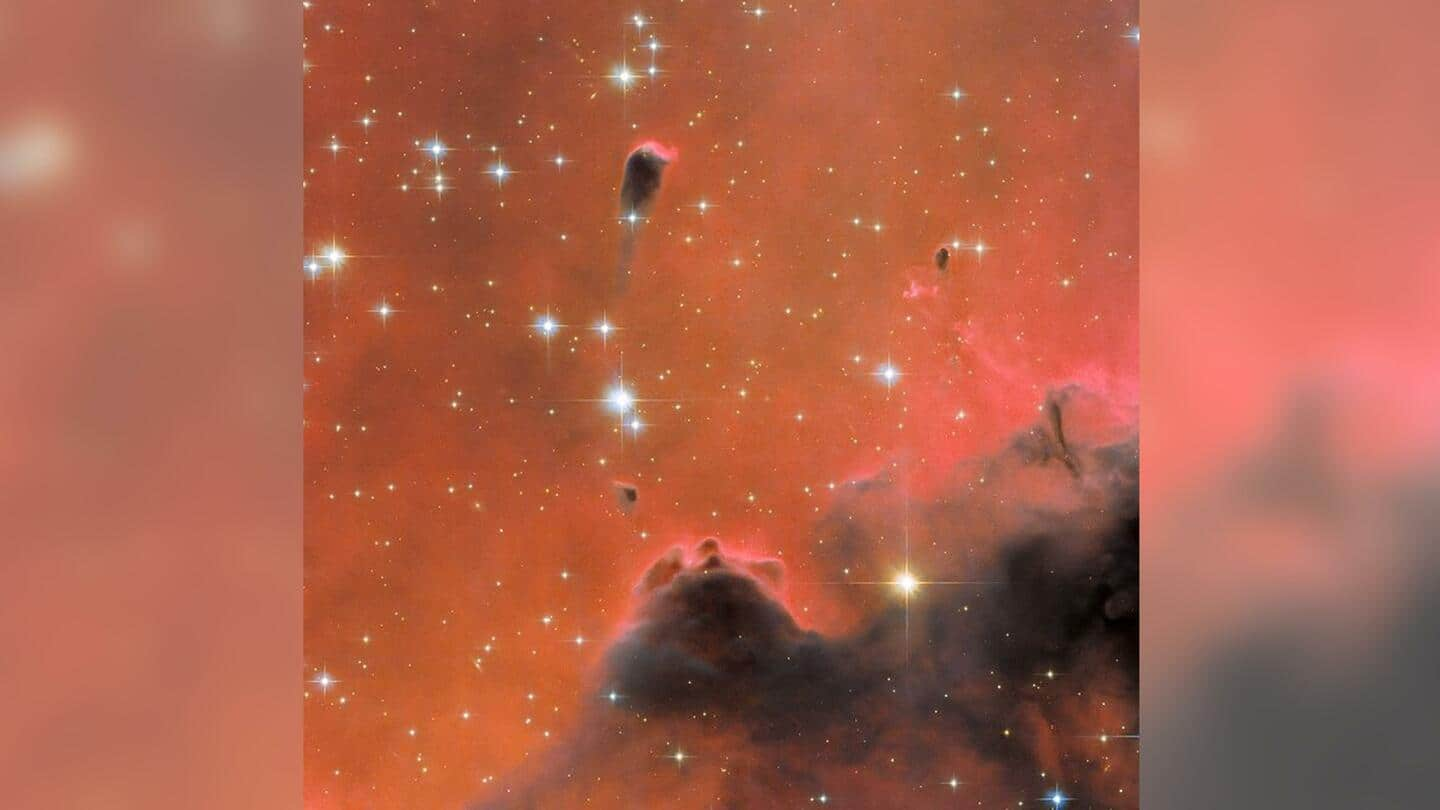
NASA's Hubble telescope captures dazzling red glow of Soul Nebula
What's the story
NASA's Hubble Space Telescope has captured the brilliant reddish glow of Soul Nebula, also called Westerhout 5, which lies about 7,000 light-years away. The suffusion of red light is caused by a light emission called H-alpha emission. This occurs when a very energetic electron within a hydrogen atom loses energy, causing the electron to become less energetic, and releasing the distinctive red light.
Context
Why does this story matter?
If you think that something about this particular Hubble image resembles James Webb Space Telescope's picture of the Pillars of Creation, then you're right. Known as the Evaporating Gaseous Globules (EGGs), these gaseous regions were identified recently. EGGs are predominantly seen at the tips of the Pillars of Creation, which have been captured by the Hubble telescope in 1995.
Image
The tadpole-shaped dark spot is a free-floating Evaporating Gaseous Globule
The vibrant image, doused in red light, has a couple of interesting features, including a free-floating Evaporating Gaseous Globule (frEGG) while bright orange-red clouds of varying density make up the background. In the picture, the frEGG is seen as a small tadpole-shaped dark region toward the upper left corner and is officially termed with rather long names: [KAG2008] globule 13 and J025838.6+604259.
Stars
Numerous stars are also visible in the Hubble picture
Several large, faint blue stars with prominent cross-shaped spikes occupy the top left corner of the image, amid which lies the frEGG. Dark, dense gas is also observed in the picture's lower right corner, which looks a lot like black smoke. A large bright yellow star and a smaller blue star appear in front of this smoky layer.
Importance
FrEGGs belong to a particular class of EGGs
Now, these frEGGs belong to a particular class of EGGs. Both frEGGs and EGGs occur in nebulas when energetic radiation from young, hot stars ionizes surrounding gas by stripping away electrons. This, in turn, causes the gas in the vicinity to disperse away from those bright stars in a process called photoevaporation, which is thought to stall the formation of stars in nebulas.
Inference
FrEGGs and EGGs are predicted to be star-forming regions
But why are FrEGGs and EGGs important? It is predicted that FrEGGs and EGGs give way to the birth of new stars. The density of these gaseous globules makes it difficult for intense ultraviolet radiation to pass through, which is found in regions filled with young stars. FrEGGs can be distinguished from EGGs. The former has a distinctive 'head-tail' shape and appears detached.